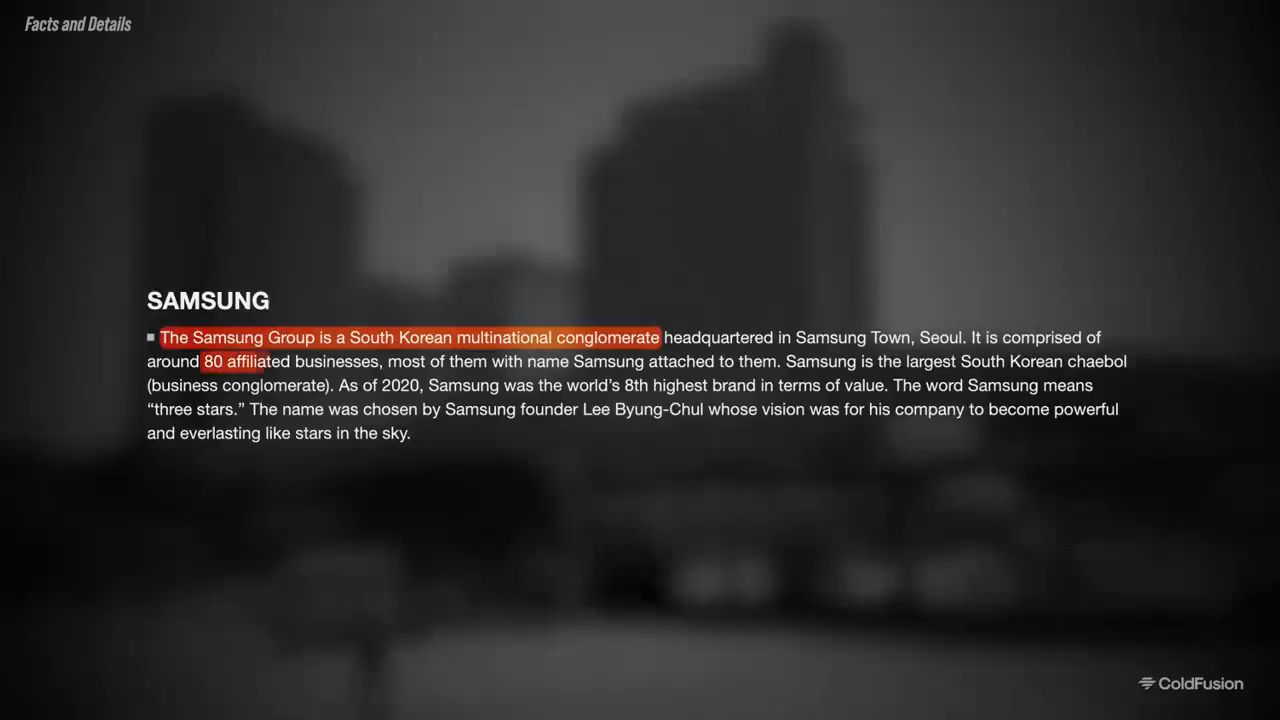Understanding Samsung’s Sudden Stock Crisis and Its Implications

Samsung's management states the company is in crisis
Samsung, a name synonymous with technological innovation and global dominance, is facing an unprecedented financial storm. Its flagship company, Samsung Electronics, recently experienced a stock panic that wiped out a staggering $122 billion from its valuation. As questions mount over its leadership, market strategy, and resilience in a rapidly changing tech landscape, the repercussions could extend far beyond the company itself, potentially impacting South Korea’s economy, for which Samsung contributes nearly 20% of its GDP.
This article delves into the causes behind Samsung’s turmoil and explores whether this crisis could be a temporary dip or the beginning of a longer-term challenge.
Samsung: More than a company

Samsung contributes 20% of South Korea's GDP, dominating multiple sectors
To understand the significance of Samsung’s financial difficulties, we must first appreciate its vast influence. Samsung is not merely a company; it is a dynasty and a conglomerate that has grown into a cornerstone of South Korea's economy. In fact, Samsung alone accounts for 20% of the nation’s GDP, leading some to refer to South Korea as the "Republic of Samsung."
While most of us recognize Samsung as a leading brand in electronics and smartphones, its influence is far-reaching. With 80 subsidiaries under its umbrella, Samsung operates across diverse sectors including construction, real estate, insurance, healthcare, and even entertainment. It builds everything from oil tankers to armored vehicles, operates hospitals, and even sells branded automobiles in South Korea. Despite its immense success, it’s astonishing to realize that the company began as a seller of vegetables and noodles.
However, such success comes with its challenges. The concentration of power within the family-owned conglomerate has sparked complex corporate governance issues, including alleged corruption and unstable leadership, which are now exacerbating its ongoing troubles.
The cause of the $122 billion collapse
At the start of 2024, Samsung Electronics, worth $400 billion, was the star of this conglomerate empire. Yet, just months later, by July, foreign investors started frantically selling off shares. Within weeks, the company lost nearly 32% of its value, amounting to over $122 billion. For any global company, much less one so integral to its nation’s economy, this collapse triggered alarms.
What caused this downturn? While stock markets can fluctuate due to investor sentiment, Samsung’s situation appears more significant. Drastic leadership changes, weak market performance, and particularly missed opportunities in booming sectors like artificial intelligence (AI) are further fueling this downward spiral.
The role of Samsung's leadership
Samsung is what’s known in Korean business culture as a "chaebol," or a family-owned conglomerate. Leadership within Samsung has always rested on the Lee family—a unique structure that has brought power but also scandal.

Samsung’s leadership centralized under the Lee family has sparked many debates
Historically, every leader of Samsung has faced legal trouble, including charges of tax evasion, bribery, or embezzlement. This trend continued in 2017, with Lee Jae-yong, the company’s heir, embroiled in a major bribery scandal. Despite being convicted and briefly jailed, he returned as the executive chairman in 2022 because the South Korean government deemed Samsung "too important" to fail.
While the company revolved around a centralized leadership model, critics argue this has stifled innovation and limited the speed at which Samsung can adapt to evolving global markets. The leadership's inability to address market demands promptly has played a role in its weakening competitiveness in key sectors like semiconductors and AI chips.
Missed opportunities in artificial intelligence
Generative AI has been the focal point of a tech revolution in recent years, leading to staggering growth in companies such as Nvidia, Google, and Microsoft. Nvidia, for example, became a trillion-dollar company by supplying hardware that powers AI innovations. However, Samsung failed to capitalize on this trend.
Samsung’s shortcomings became glaring when it couldn’t meet Nvidia's performance benchmarks for high-bandwidth memory (HBM3E) chips. Its competitors, including SK Hynix, stepped in to provide these chips, becoming exclusive suppliers to Nvidia and further sidelining Samsung in the AI race.
Adding insult to injury, Samsung publicly admitted its “struggles in high-performance AI memory" and missed quarterly financial targets. The company was forced to apologize to investors, yet by this point, confidence had already waned.
Lagging semiconductor competitiveness
While semiconductors remain a core strength of Samsung Electronics, the company is struggling to hold its own against competitors like TSMC. Taiwan’s TSMC dominates with a staggering market share of over 61.7%, compared to Samsung’s meager 11%, largely thanks to its ability to produce chips with superior efficiency and power.
The widening gap also threatens Samsung’s partnership network. High-profile clients such as Apple and AMD continue relying on TSMC for their chip supply, leaving Samsung scrambling to reclaim its footing in this ultra-competitive sector.
Internal disruptions and market instability
Leadership reshuffles have emerged as Samsung’s response to mounting problems. Most notably, in May 2024, Samsung revamped the leadership of its semiconductor business, appointing Junyong Hong in hopes of injecting fresh perspective into its core operations.

Samsung appoints Junyong Hong to combat semiconductor challenges
However, internal instability has been a recurring challenge for Samsung. While these leadership overhauls aim to fix long-standing structural issues, they’ve created a perception of turbulence within upper management, eroding external confidence. Furthermore, coupled with layoffs impacting 10% of its global workforce, Samsung’s current approach risks alienating employees while potentially achieving only short-term cost-cutting gains.
Key takeaways from the crisis
Despite the gloomy outlook, Samsung’s diverse business portfolio provides it with some resilience. The company’s smartphone sales and display technologies are performing well, which might serve as anchors amid turbulent waters.
Samsung also holds a longstanding reputation for innovation, and its leadership reshuffle signals a willingness to address its flaws. By prioritizing investments in core areas like semiconductors, Samsung has a chance to refocus and regain competitiveness.

Samsung makes tough decisions, including layoffs and reduced projects
However, the broader question remains: Is the crisis cyclical, or does it point to unaddressed, systemic issues? For an economy so heavily dependent on Samsung, the answer carries weight well beyond the company’s headquarters.
Conclusion: A chance for redemption
Samsung’s current predicament is not unprecedented, nor is it insurmountable. The conglomerate’s market performance is under fire due to a mix of stagnation in vital sectors, missed opportunities in AI, and strategic missteps in semiconductors. However, its diversity, existing market share, and willingness to realign its priorities offer hope for recovery.
The next few years will test Samsung’s resilience against more efficient competitors like TSMC, rising Chinese tech firms, and the ever-changing landscape of AI-powered technologies. For now, it’s clear that Samsung’s ability to enact genuine reform—from leadership to market adaptability—will determine its trajectory.
In an era where innovation is everything, Samsung must evolve—or risk being left behind.
